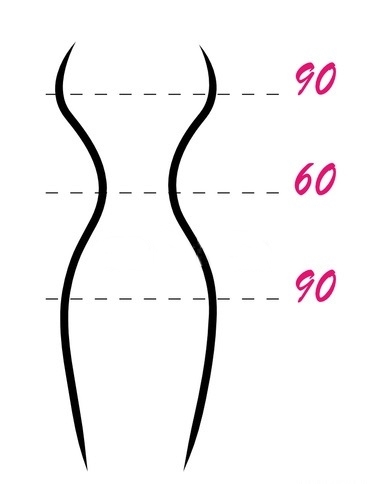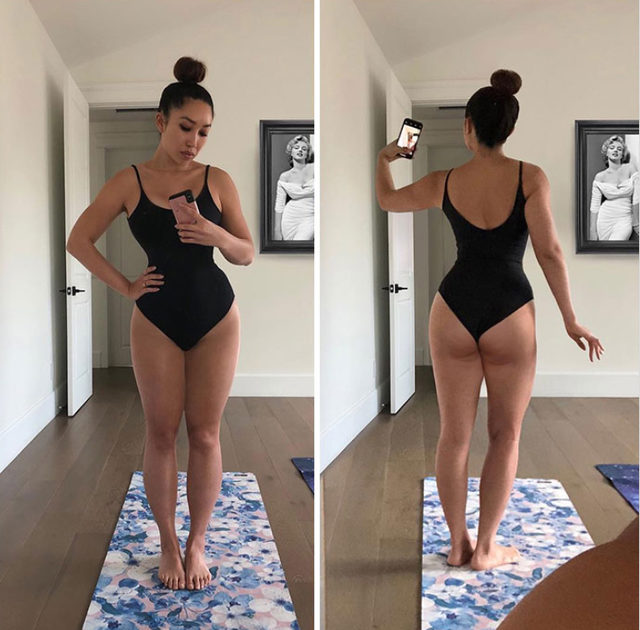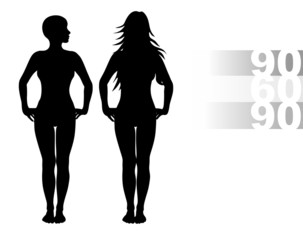Understanding The 90 60 90 Rule: Myth Or Reality In Fashion?
Introduction
The term "90 60 90" has long been associated with the ideal female body shape in the fashion industry. These numbers represent specific measurements in centimeters for bust, waist, and hips, respectively. But where did this rule originate, and does it truly define the ideal body type? In this article, we'll explore the origins of the 90 60 90 rule, its implications, and whether it aligns with reality. Let's figure it out together!
What Does 90 60 90 Represent?
The 90 60 90 measurements refer to the supposed ideal proportions of a woman's body, measured in centimeters:
- Bust: 90 cm
- Waist: 60 cm
- Hips: 90 cm
These numbers are often cited as the benchmark for beauty and aesthetics in the fashion world. However, it's important to note that these measurements are not universally accepted or realistic for all women. In fact, very few models on the catwalk actually fit into these exact proportions.
- Hdhub4uin Hollywood
- Sherien Almufti Net Worth
- Mkvmoviespoint All Quality And Hindi Dubbed Download
- Mms Instagram Viral
- Gorecentre Xxx
The Origin of the 90 60 90 Rule
Who came up with this rule? The exact origins of the 90 60 90 rule remain unclear, but it has become deeply embedded in the fashion industry's perception of beauty. Historically, the fashion world has favored slim, hourglass figures, and the 90 60 90 proportions align with that ideal. However, the reasons behind this preference are complex and multifaceted.
Why Does the Fashion Industry Prefer Skinny Models?
There are several reasons why the fashion industry often favors skinny models:
- Garment Fit: Clothing is typically designed on standard mannequins with specific measurements. Skinny models help showcase the fit and cut of garments without altering the original design.
- Time Efficiency: Using models with consistent sizes saves time during fittings and photo shoots.
- Visual Appeal: Slim figures are often perceived as more "elegant" or "sophisticated" on the runway.
While these reasons may justify the industry's preference for certain body types, they do not necessarily reflect the diversity of real women's bodies.
Reality vs. Ideal: Do Women Really Fit the 90 60 90 Mold?
In reality, very few women—let alone models—fit the 90 60 90 proportions. For instance, the average measurements for Asian women are closer to 84 cm for bust, 62 cm for waist, and 86 cm for hips. These numbers vary significantly depending on ethnicity, genetics, and lifestyle.
Moreover, body shapes differ greatly across individuals. Some common body types include:
- Hourglass: Curvy with balanced bust and hips.
- Pear-shaped: Wider hips compared to bust.
- Rectangle: Slim and straight with minimal curves.
- Apple-shaped: Wider upper body with a smaller lower body.
It's essential to recognize that beauty comes in all shapes and sizes, and no single measurement can define the ideal body type.
90 60 90 in Other Contexts
Interestingly, the term "90 60 90" appears in other contexts as well. For example:
Blood Pressure
In medical terms, a blood pressure reading of 90/60 indicates normal or slightly low blood pressure. Here, the first number (90) represents the systolic pressure, or the pressure in your arteries when your heart beats. The second number (60) represents diastolic pressure, or the pressure when your heart rests between beats.
Readings at or below 90/60 usually indicate low blood pressure, also known as hypotension. While mild hypotension is generally not harmful, extreme cases can lead to dizziness, fatigue, or even fainting.
Geometry
In mathematics, the phrase "90 60 90" can also refer to the angles of a right triangle. A right triangle has one 90-degree angle, and the other two angles add up to 90 degrees. This concept is fundamental in geometry and trigonometry.
Challenging the 90 60 90 Norm
While the 90 60 90 rule persists in the fashion industry, there is growing recognition of the need for diversity and inclusivity in beauty standards. Many designers and brands are now embracing models of all shapes, sizes, and ethnicities. This shift reflects a broader societal movement toward celebrating individuality and rejecting rigid beauty norms.
Why Diversity Matters
- Representation: Including diverse body types ensures that everyone feels seen and valued.
- Self-Esteem: Realistic beauty standards can boost confidence and reduce body dissatisfaction.
- Innovation: Embracing diversity inspires creativity and innovation in design.
Ultimately, the fashion industry must evolve to reflect the real world's diversity rather than perpetuating unrealistic ideals.
Conclusion
The 90 60 90 rule has long been synonymous with the ideal female body shape in the fashion industry. However, upon closer examination, it becomes clear that this standard is neither realistic nor inclusive. Very few women, including professional models, fit into these exact measurements. Moreover, the fashion world's preference for skinny models is driven more by practical considerations than by an accurate representation of beauty.
As society continues to challenge outdated beauty norms, there is hope for a more inclusive future. By celebrating diversity and rejecting rigid standards, we can redefine beauty in a way that honors all body types. Remember, beauty is not confined to a single set of measurements—it exists in every shape, size, and form.
In summary:
- The 90 60 90 rule represents an idealized body shape but does not reflect reality for most women.
- The fashion industry's preference for slim models is influenced by practical and aesthetic considerations.
- Diversity and inclusivity are essential for redefining beauty standards.

Фигура 90–60–90: миф или идеал? Какие параметры считаются идеальными

Artık 90 60 90 değiliz! Ezber bozuldu - Olay Gazetesi Bursa Gazetesi Bursa

Bilder und Videos suchen: "90 60 90"